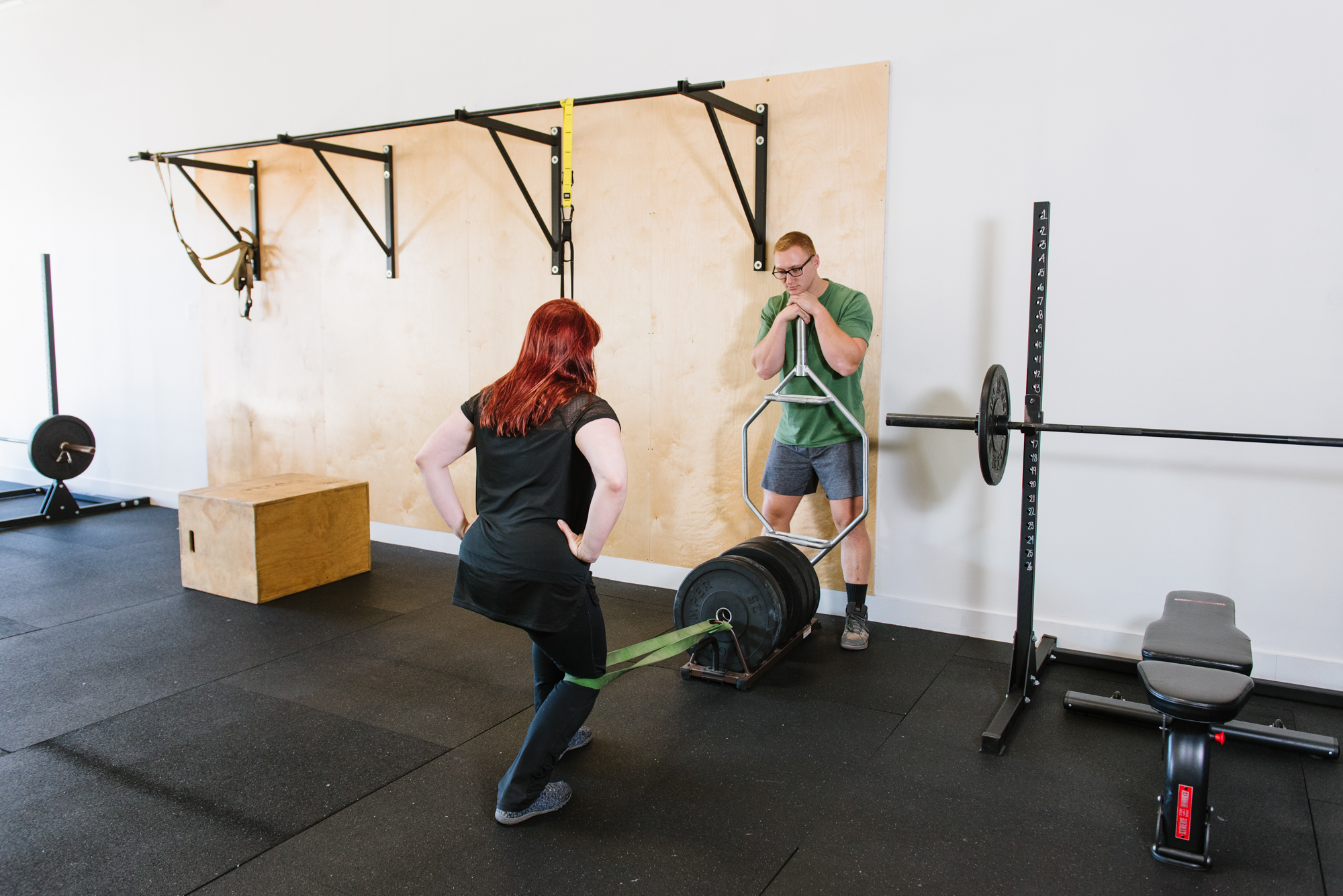Training to improve balance is commonly overlooked. Strong core, running, and getting steps in to fill activity rings in your favorite wearable technology are popular topics to talk about. However, presentations of imbalance pose a serious threat to populations living with previous injuries, decreased fitness levels, and advanced age. Deficiencies in the ability to maintain balance introduces detrimental possibilities to our health including risk of falling.
A learning objective we focus on for our beginning personal training clients is to teach them to appreciate how to utilize strength and power through the ankles, knees, and hips. In particular, when performing squatting exercises. Our coaches assess the squat effectiveness of the client’s squat performance by noting the performance their feet and ankles throughout the movement. Are the heels lifting off the ground? Do the arches o the feet collapse inward? Is the exercises participant on the balls of their feet? Each of these observations demonstrate a technique flaw when performing squatting exercises. This indication of deficiencies in coordination while performing squat exercises serve as factors contributing to limited mobility, back, hip and knee pain, and decreased control of balance.
Force produced from the feet travels to the knees and ultimately travels to the powerful hip joints. It’s noteworthy to understand the ankles, knee, and hips are interconnected when it comes to having strong, injury free, and coordinated lower extremities. An inward collapse of the arches of the feet lead to inward collapse of the knees. This suboptimal deviation to the tracking of the knees impedes the ability for the strong rotational muscles of the hips from engaging properly. A decrease in muscular engagements induces impediments to balance and strength. This contributes to arthritis and a a multitude of mechanisms of injuries including falls. Decreases in strength lead to underuse of the lower extremity joints.
Fortunately, the understanding how to properly perform a squat can significantly improve the muscles of the ankles, knees, and hips. Improving the structural integrity of these joints significantly reduce pain, risk of injury, and the likelihood of tripping and falling.
Imagine our hip joints with the various muscles of the glutes, hamstrings, adductors, abductors, and quadriceps attached to it. Now, think about a docked ship at a boat yard. The nautical rope attached from the boat to the strong post at the shore is wound up tightly in a strong knot. This causes enough rotational torque to allow tightness around the post preventing the ship from drifting away. Our hip bones and muscular attachment are similar.
As our feet create force into the ground, our knees are allowed to extend. The muscles attached to the knee activate as well, similar to the tension that is on the rope holding the boat from veering off to the sea. More importantly, the isometric points where the ropes are attached to the pole at the shore is similar to the various rotary muscles attach to our hip bones. The more torque we can produce from our feet to our hips allow us to keep our hips underneath our torso to have a strong center of gravity. Without rotational force from our feet traveling up to our knees and eventually our hips, our hips will get “lost at sea” like a boat with a weak attachment point to the shore.
We can’t have a reinforced posture if our hips are not aligned under our torso. Therefore, it is beneficial for our functionality to use the muscles that bring the hips underneath the torso to push them forward while standing. Going back to our boat example, if the attachment point of the nautical rope from shore to the boat isn’t strong enough, the rope unravels, and we can farewell to our ship as it drift off to sea. By creating power from our feet, knees, and hip muscles, our hips won’t be in a suboptimal position. If our hips aren’t engaged by creating torque from the ankle, knees, and hip insertions points, our hips become loose and fall backwards.
It is critically important to have strong ankles, knees, and hips. If not, the body will lose control and crumple over. Boats need a significant amount of reinforcement to hold them ashore. Our hips need similar reinforcement to stay underneath our torso to create a strong center of gravity and maintain our structural integrity.
Sean McCawley, the founder and owner of Napa Tenacious Fitness in Napa, CA, welcomes questions and comments. Reach him at 707-287-2727, napatenacious@gmail.com or visit the website napatenaciousfitness.com.

